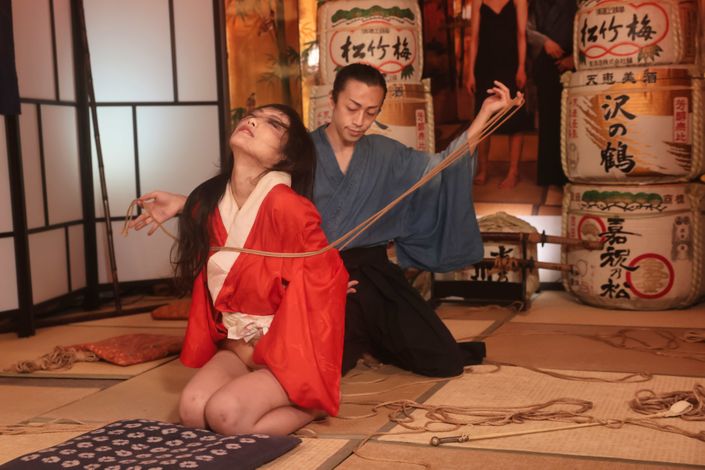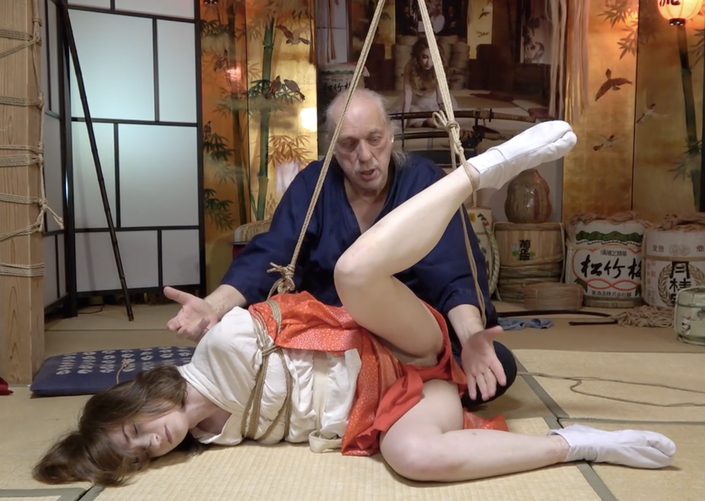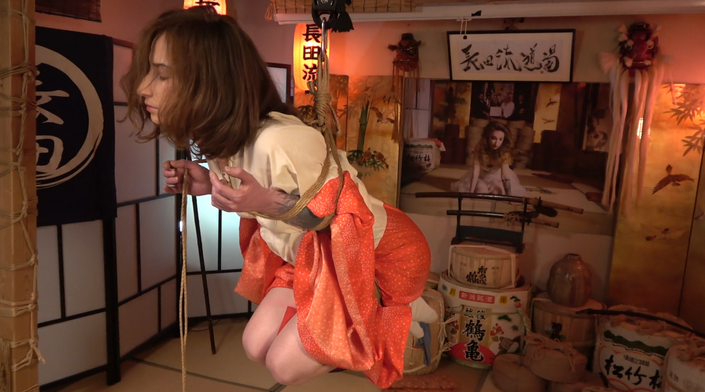
In Japan we distinguish between two main genres in shibari/kinbaku. Systems (or styles, ryu/流) that focus more on the technical aspects of tying, and systems that focus more on the emotional, mental, erotic aspects of tying.
Yukimura-ryu (雪村流) is drawing heavily on erotism and (amongst other things) is playing with bashfulness.
Taking a common takatekote (高手小手) tie as an example, the rope technician (often referred to as nawashi/縄師) will focus on rope placement, rope lock-offs, rope tension while at the same time taking into account body shape and flexibility of ukete (受け手) while "customizing" the tie for safety.
In Yukimura-ryu, the bakushi (縛師) will focus on connectivity by applying the rope through loving kindness and evoking shuuchi (羞恥, "shame") through kairakuseme (快楽責, infliction of pleasure). This caressing style can be broken down into micro units that can then be taught and subsequently mastered. The curriculum of Yukimura-ryu (雪村流) is making available these base elements through a multitude of exercises that are structured to empower your rope partner who is offering their vulnerability to you.
Eighth Kyu of Yukimura-ryu
壱. Goals
Introduction to base elements such as positioning, stability, conscious usage of space.
Efficient/ergonomic movements, hand change, change of positions.
Friction-free and smooth rope handling
Allowing and encouraging emotions.
弐. Theory
Spatial constellation between ukete (受け手) and bakushi (縛師)
Body motions, body control, body manipulation
Nawajiri / 縄尻
Show Emotions!!! Overcoming apprehension and shyness. Have the courage to show your true self.
参. Exercises
The pulling game / maete hikiage shibari (前手引上げ縛り) ***
Rope collar exercises ***
Nawajiri on wrists and ankles
Five height manipulations
Yukimura leg binder / Ashikubi-momo-nawa (足首腿縄)
Yukimura feet tying (single and double) / Ashiura-nawa (足裏縄)
If you wish to study further you are encouraged to visit the rope dojo of Harukumo (Zurich).
Kata-ashi-zuri (片足吊り)

Kata-ashi-zuri (片足吊り)
.

Yukimura Legbinder
.

Nibushiki Juban (二部式襦袢)
Terminology
Yukimura Haruki – 雪村春樹
Yukimura-ryu – 雪村流
Aisatsunawa – greeting tie, 挨拶縄
Kata-ashi-zuri – one-leg-up suspension, 片足吊り
Nawajiri – the (working) end of the rope, 縄尻
Ukete – the one who is "receiving" the rope, 受け手
Nawashi/bakushi – the one who does the tying, 縄師/縛師
Nibushiki juban – two-piece kimono undergarment, 二部式襦袢
There are various kinds of kimono undergarments.
The most common is the nagajuban (長襦袢).
You may notice that the naga (長) in nagajuban is also part of Osada (長田), the name Osada Steve (長田スティーブ) inherited from kinbaku grandmaster Osada Eikichi (長田英吉) who passed away in 2001. The most common reading of the 長田 kanji combination is nagata. Thus, whenever yours truly is perambulating in his Osada-ryu (長田流) t-shirt, the locals will solemnly whisper "Nagata-ryu" because they believe he's some kind of kinbaku master, or what.
Mister Language Person chiming in
The Chinese character 長 can also be found in constructs like:
社長 – shatchou, president (of a company)
会長 – kaichou, chairman
部長 – buchou, manager, section chief
長男 – chounan, eldest son
延長 – enchou, extension (time)
億万長者 – okuman chouja, billionaire
身長 – shinchou, height
長さ – nagasa, length
長い – nagai, long
長靴 – nagagutsu, boots (think puss in boots, 長靴をはいた猫)
長崎 – Nagasaki
長田 – Osada (or Nagata)
We now learned that 長 could be read as 'osa', 'naga', and 'chou'.
But wait! There is more. For example, the reading of the fairly common family name 長谷川 is Hasegawa.
Which brings us to the character 谷 (tani, valley) which is the 'se' in Hasegawa (長谷川), but also the 'ya' in Shibuya (渋谷) and Yotsuya (four valleys, 四谷) train stations, and the 'dani' in Uguisudani (valley of the bushwarblers, 鶯谷) station.
And then there is:
谷間 – tanima, cleavage
谷ナオミ – Tani Naomi (the undisputed superstar S&M actress)
The Curriculum
145+ minutes
First Section
Available in
days
days
after you enroll
Chef's Recommentations
Perambulate through the vast treasure trove of high-quality workshops and structured Osada-ryu school system courses.
Check your inbox to confirm your subscription




